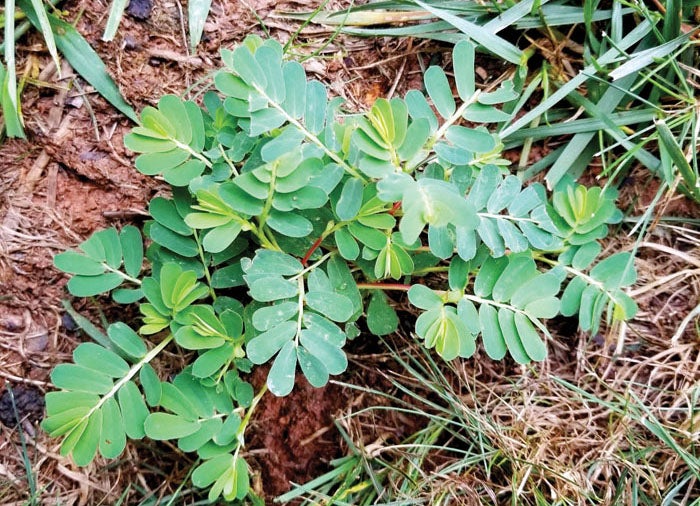Q&A: Moving houseplants indoors for the winter, pruning hollies
Published 12:00 am Sunday, October 17, 2021

- Mimosa weed can be difficult to control.
Sounds crazy with our usually warm October weather but frost will be here soon, and many homeowners still have gardening and landscaping chores. Inquiries concerning fall maintenance of their lawns and landscapes plants are common concerns. These recent questions below may be of relevance to your gardening situation.
Question: I guess I need to move my houseplants indoors soon. They’ve done well outdoors for the duration of our warm fall season. Anything special I need to do to them? Answer: Yes, ants, spiders, yellow jackets and other creatures often find a summer residence houseplant on vacation outdoors. Drench the soil with a household insecticide a few days before bringing indoors to eliminate harboring insects. Follow label instructions carefully as if to spray the plants and then pour the mixed solution as you would water the plant. Group the plants together if possible and try to place them in a room with bright indirect light. Utilizing a humidifier in the room will also help them survive the dry, indoor conditions during the winter.
Question: I have a holly bush that is growing too large, almost like a tree and I want to cut it back. I don’t want to kill it, but I want to severely prune it and let it come back as a smaller shrub. When is the best time to cut it back severely? Answer: The best time would be in early spring during mid to late March. Cutting it back in the fall may subject the plant to temperature extremes causing damage to newly emerging summer sprouts.
Question: I discovered a new weed in my lawn this week. It looks much like a mimosa tree leaf and its taking over my flower beds. What is it and how do I control this pest? Answer: The weed is chamberbitter (Phyllanthus urinaria)also known as gripeweed, leaf flower or little mimosa. Chamberbitter is a warm season annual that has emerged in our area over the past few years. The plant grows widely in South America and Asia where it is used as an herbal remedy for kidney stones. Alabama is inundated with the plant which is now on the list of noxious weeds. Chamberbitter is difficult to control for several reasons. It is tough, grows very fast, and is drought tolerant. After germination it produces flowers and an abundant number of viable seeds. The flowers produce small seed capsules that literally explode, spreading seeds in many directions away from the plant. The weed can be controlled with broadleaf weed killers for cool season turf, but you need to be persistent. Go to https://hgic.clemson.edu/factsheet/chamberbitter/ for more detailed information.
Darrell Blackwelder is the retired horticulture agent and director with the North Carolina Cooperative Extension Service in Rowan County. Contact him at deblackw@ncsu.edu .


